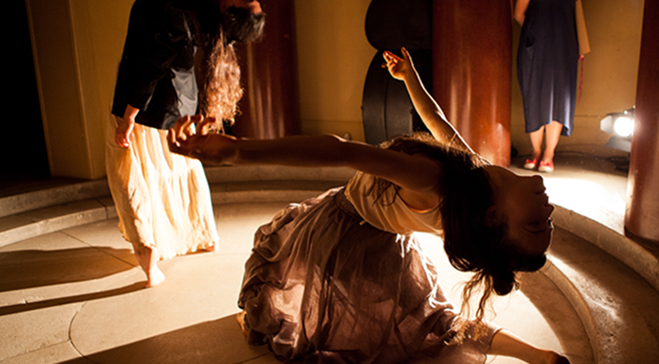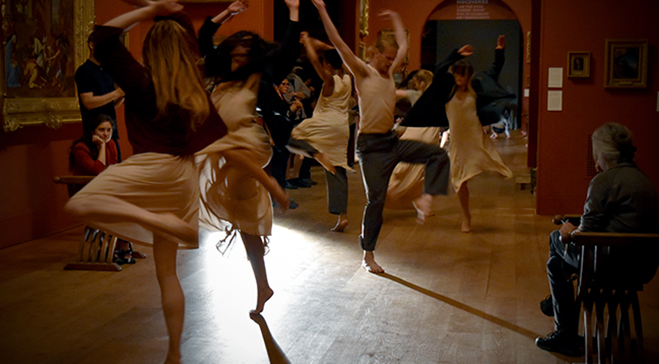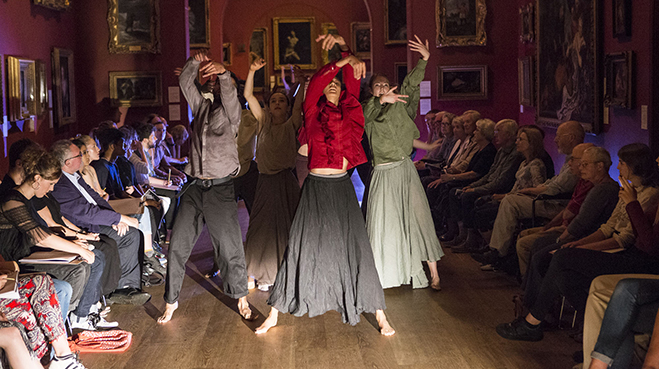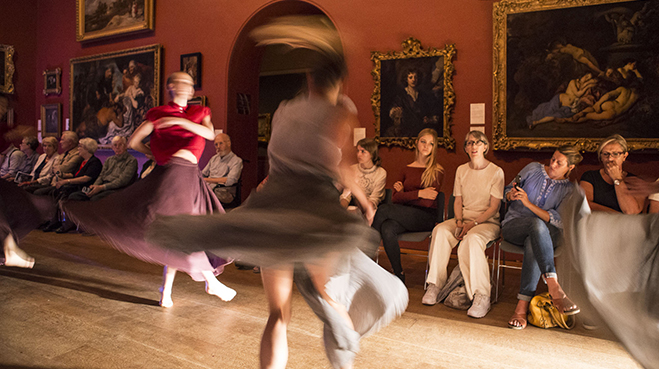Sarah Crompton, writer and broadcaster, reviews her experience of Exodus
Last week, the choreographer and dancer Dane Hurst staged what he called “a choreographic response” to The Deluge, a painting by Winifred Knights which is currently on show at the Dulwich Picture Gallery as part of the revealing retrospective of this over-looked and under-valued artist. It was a revelation.
Dances that are inspired by paintings are not that common, but are often effective. I very much liked Gillian Lynne’s A Simple Man, which vividly brought the art of LS Lowry to life through the movements of the dancers of Northern Ballet. And the American choreographer William Forsythe fashioned one of his brilliantly cerebral pieces, Three Atmospheric Studies, around a lecture on Cranach’s Crucifixion which in his hands became the starting point for a far-sighted study of the suffering and violence caused by modern warfare.
But what I particularly liked about Dane Hurst’s Exodus was the fact that it was actually performed in the Gallery itself, feet away from The Deluge. So the conversation between dance work and painting was fresh and alive.
The Deluge is itself a peculiar and haunting painting. Its stark, angular lines, its monochrome palette relieved only by the odd flash of red, its pure control and discipline, contain and conceal a scene of great anguish, where people are facing the end of their world, crawling away from imminent destruction.
All those qualities were echoed with considerable subtlety and thoughtfulness in Hurst’s work, danced in close-up communion with its audience in the central enfilade and surrounding rooms of John Soane’s grand gallery.
Hurst has fashioned his own portrait of people in flight. In the first part, Purgatory, he conjured refugees who have to gather up their scant possessions, choosing what to take as they leave their homes, forced into borrowed clothes that may not fit them, separated from treasured possessions. The dancers scurry among a long line of shoes and piled garments, salvaging what they can. Later they bequeath the bundles to members of the audience, involving them in their plight. I felt, as I carried the clothes, the weight of their preciousness.
This sense of involvement is echoed too in the way dancers intermittently hold a person’s hand, gazing into their eyes, an appeal that is at once mute and unanswerable. Their proximity is a challenge to our distance; as they threw themselves at our feet in the stretching movements of despair, we were implicated in their suffering.
In the second half, Promised Land?, a more formal, patterned dance takes over, but the emotional force of the steps was just as great. The company carry and support each other, entwining and separating as a group. Sometimes they dance alone, arms raised, as if holding on to a memory. At other moments, they are reunited in a great passionate rush towards something that may or may not be salvation.
What I loved about the piece was its emotion. Its choreography is absolutely full of feeling and care. And it was perfectly sited within this intimate, ancient gallery, a living symbol of art’s eternal mission to civilise and aspire.
The plight of refugees is a scar on society’s belief in its own reflex towards improvement; it takes us back to the dark ages, before art, before dance. By reminding us of that in a place where art thrives and matters, Hurst has not only made a terrifically effective dance piece, but also a statement of great humanity.
Sarah Crompton is a trustee of Dulwich Picture Gallery. She writes on dance, art and theatre for The Guardian, the Sunday Times, Whatsonstage, and others.
Learn more about Exodus here >>




